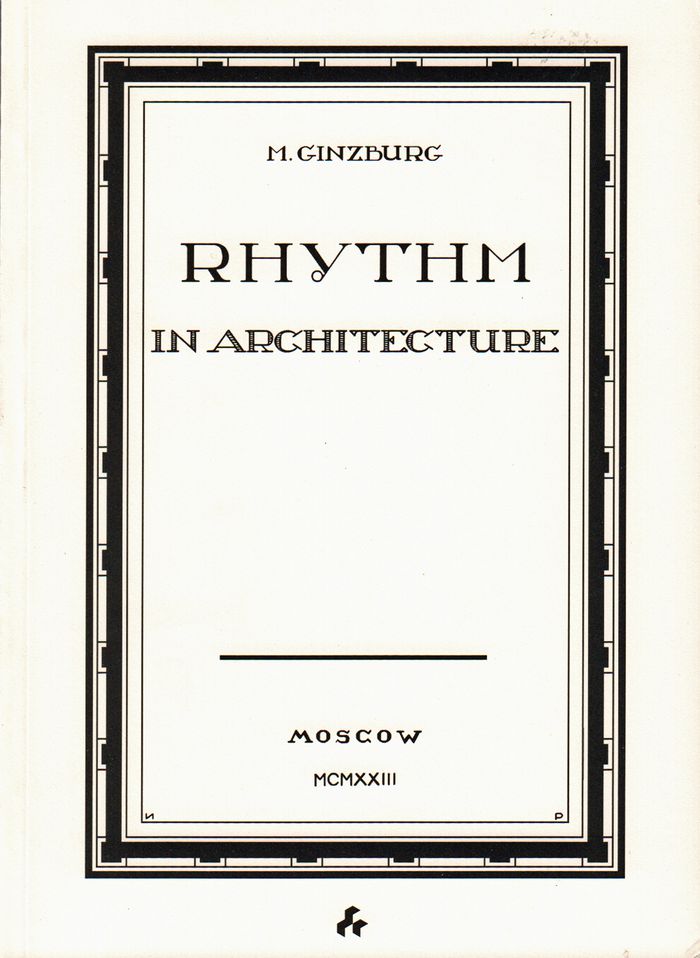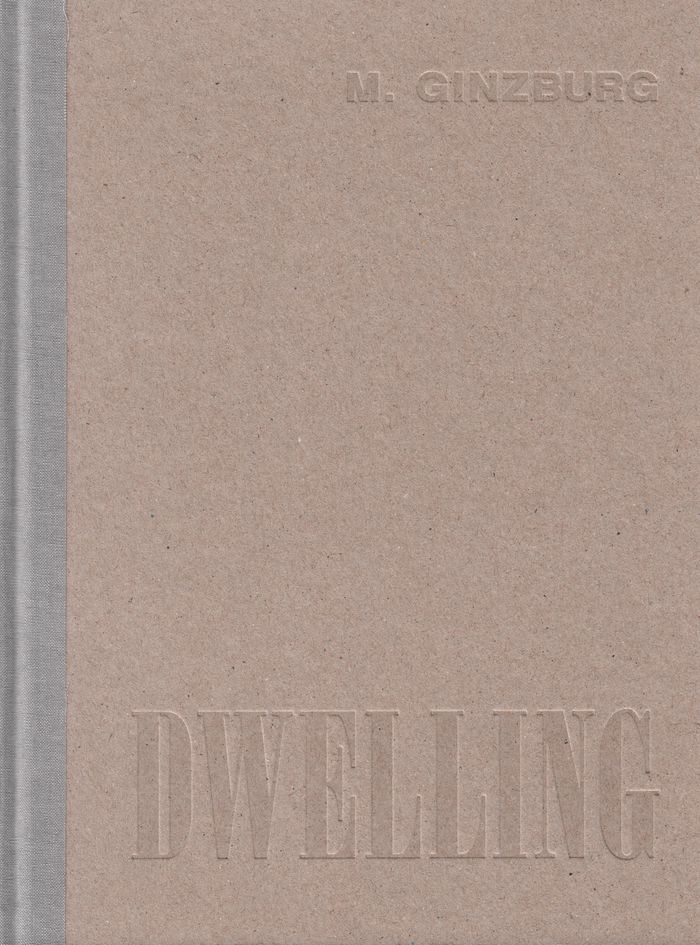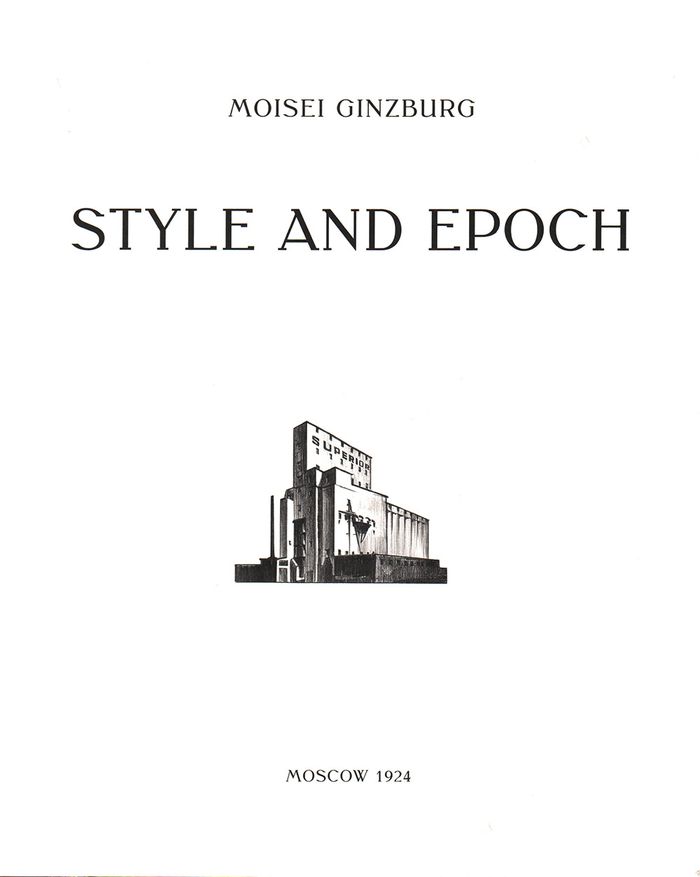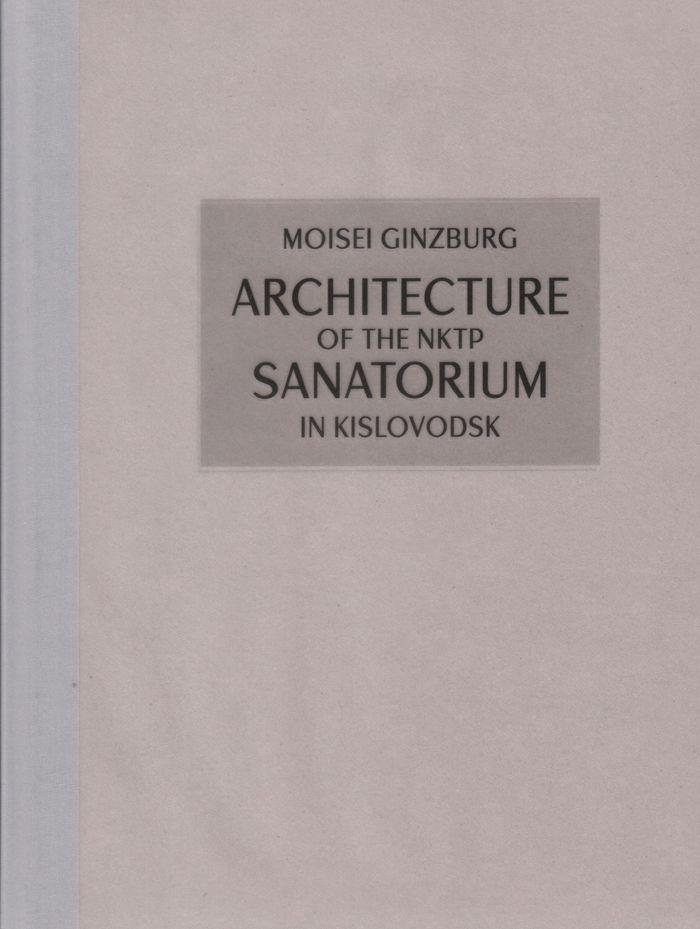Rhythm in architecture
$29.95
(available to order)
Summary:
"Rhythm in Architecture" is the first ever translation into English of a key early Modernist text, written by the celebrated Soviet Constructivist architect Moisei Ginzburg and first published in Russian as Ritm v Arkhitekture in 1923. Ginzburg is most famous for his Narkomfin Building in Moscow, completed in 1932, which he described as a “social-condenser”: a radical(...)
Rhythm in architecture
Actions:
Price:
$29.95
(available to order)
Summary:
"Rhythm in Architecture" is the first ever translation into English of a key early Modernist text, written by the celebrated Soviet Constructivist architect Moisei Ginzburg and first published in Russian as Ritm v Arkhitekture in 1923. Ginzburg is most famous for his Narkomfin Building in Moscow, completed in 1932, which he described as a “social-condenser”: a radical experiment in communal living. While Ginzburg’s second book Style and Epoch, published in 1924, is often seen as the manifesto for Russian Constructivism, Rhythm in Architecture?which preceded it?can be seen as his attempt to create a synthesis in thinking about architecture as a whole, seeking to show how “the true essence of all works of architecture” are ”inspired by the laws of rhythm”. "Rhythm in Architecture" is republished in cooperation with the Ginzburg Design Practice run by Moisei Ginzburg’s grandson, Aleksey and his partner Natalia Shilova. It is the first of a planned series of reprints of Ginzburg’s four books, Home, 1934 and Industrialising Housing Construction, 1937 as well as Style and Epoch, 1924?the only one previously available in English.
Architectural Theory
$60.00
(available to order)
Summary:
"Dwelling: Five Years’ Work" on the Problem of the Habitation was the third of four groundbreaking works written by the Soviet modernist architect Moisei Ginzburg (1892-1946). Originally published in 1934, this facsimile edition is the first translation of the entire book into English, detailing Ginzburg’s work over a five-year period in the late 1920s and early 1930s.(...)
Dwelling: Five years work on the problem of habitation
Actions:
Price:
$60.00
(available to order)
Summary:
"Dwelling: Five Years’ Work" on the Problem of the Habitation was the third of four groundbreaking works written by the Soviet modernist architect Moisei Ginzburg (1892-1946). Originally published in 1934, this facsimile edition is the first translation of the entire book into English, detailing Ginzburg’s work over a five-year period in the late 1920s and early 1930s. Starting with a broad survey of habitation in different cultures and traditions, Ginzburg elucidates the ways in which he and his colleagues tried to adapt and apply architectural solutions to the new demands of Soviet life. This includes a detailed analysis of the Narkomfin building in Moscow, now being restored by his grandson, the architect Alexey Ginzburg; a description of his work on the commune house; and the theories behind two major housing projects: Magnitogorya and Zeleny Gorod. The period covered by "Dwelling" represents the highpoint of Constructivism.
Architecture Monographs
Style and epoch
$40.50
(available to order)
Summary:
''Style and Epoch'' by Moisei Ginzburg, first published in 1924, was the architect's key work; it became the philosophical basis for the Constructivist group of architects. Ginzburg defined the new style in architecture that signified a break from traditional styles. After two industrial revolutions, architects were faced with new challenges by society. The response was(...)
Style and epoch
Actions:
Price:
$40.50
(available to order)
Summary:
''Style and Epoch'' by Moisei Ginzburg, first published in 1924, was the architect's key work; it became the philosophical basis for the Constructivist group of architects. Ginzburg defined the new style in architecture that signified a break from traditional styles. After two industrial revolutions, architects were faced with new challenges by society. The response was an innovative approach to architecture that put people - their needs and functions - at its center. The author's understanding of global economic and cultural processes is evident in his description of the development of a style that came to define the nature of architecture in the twentieth century, which today we call modernism. The significance of this book in terms of an understanding of culture, the avant-garde and the subsequent development of modernist architecture is hard to overestimate.
Architecture Monographs
$50.00
(available to order)
Summary:
The NKTP (People’s Commissariat for Heavy Industry) Sanatorium was commissioned in 1934 by Grigory Ordzhonikidze, one of Stalin’s closest allies and head of the Commissariat for Heavy Industry (he committed suicide after falling out with Stalin in 1937, the year of the sanatorium’s completion). Despite the prevailing ideology that sought to outlaw modernism in favour of(...)
Architecture of the NKTP Sanatorium in Kislovodsk
Actions:
Price:
$50.00
(available to order)
Summary:
The NKTP (People’s Commissariat for Heavy Industry) Sanatorium was commissioned in 1934 by Grigory Ordzhonikidze, one of Stalin’s closest allies and head of the Commissariat for Heavy Industry (he committed suicide after falling out with Stalin in 1937, the year of the sanatorium’s completion). Despite the prevailing ideology that sought to outlaw modernism in favour of Stalinist neoclassicism, architect Moisei Ginzburg, with a team that included Ivan Leonidov, Evgeny Popov and Nikolai Paliudov, succeeded in creating an architectural ensemble that essentially retained its modernist integrity – and today remains a masterpiece of 1930s modernism – while making only minor concessions to the new Stalinist orthodoxy.
Commercial interiors, Building types



